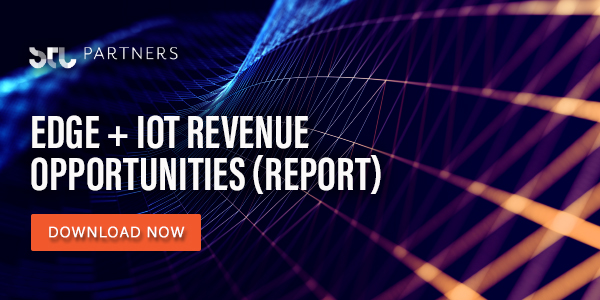As 5G networks become more ubiquitous, smart organizations are laser-focused on doing everything they can to deliver lightning-fast performance to their users to improve experiences, generate new revenue streams, and optimize efficiency.
To this end, more and more companies across all industries — including telco operators, manufacturers, and utility companies — are investing heavily in two modern technologies: edge computing and Internet of Things (IoT) deployments.
In this post, we’ll examine the differences between edge computing and IoT and where the two come together to form impressive use cases that are golden monetization opportunities for enterprises today.

Table Of Contents
Edge Computing and IoT: How They’re Different
At a high level, edge computing refers to architecture that moves some portion of an application, its data, or its services away from a central database and out to a distributed computer system at the “edge” of the network for faster processing and lower transmission costs.
By moving workloads to the edge, organizations benefit from low latency, high availability, more resilience, and more mobility. At the same time, they improve data sovereignty.
On the other hand, the IoT refers to distributed objects that connect to the internet and can communicate with one another — like wearable technology, smart sensors, and smart locks. With smart investments in IoT, organizations can collect more data, generate new business insights, automate processes, and monitor their assets from wherever they happen to be.
What does this look like in the real world? By rolling out several IoT devices across a manufacturing facility, for example, organizations can collect real-time data about key pieces of machinery and use that information to control processes, improve uptime, and conduct preventative maintenance.
Bottom line? While IoT platforms are designed to accelerate data collection and aggregation, edge computing facilitates faster data analysis with automation.
Edge Computing and IoT: Where They Overlap
While edge computing and IoT have their differences, there are a number of new use cases that are causing the two technologies to converge.
For starters, as public and private 5G networks continue to mature, enterprises are increasingly demanding platforms that are interoperable across edge and IoT functions so they can unlock the full potential of each. Additionally, there are new vendors popping up all the time, and more and more vendors are offering vertical-specific solutions. In turn, enterprises are demanding feature-rich solutions that are powerful and easy to use, which will require edge IoT platforms.
What’s more, as organizations increasingly aim to transform into data-driven operations capable of making decisions in real time, they will also need solutions that can orchestrate data analytics across devices, on-premises, and at the network edge to optimize workloads and accelerate decision-making.
Simply put, these drivers and the need for speed are leading toward the convergence of edge and IoT. As a result, enterprises that wish to drive competitive advantage need to explore co-deployment of the two technologies, particularly since:
- IoT has matured. While IoT has been continuously evolving, organizations have historically been most interested in using these connected devices for data collection. As edge technology advances, it’s now possible to bring data analytics directly into the IoT platform, speeding up decisioning while making workloads more cost-efficient.
- The cloud isn’t sufficient for complex real-time data analytics. The latency and reliability limits of the cloud make it difficult for organizations to make real-time decisions across large swaths of data. Organizations that wish to unlock the full power of machine learning and artificial intelligence need to move these workloads to the edge if they really want to be able to move as fast as real time.
- Edge offers a solution. By moving workloads to the edge, organizations can run analytics workloads locally, resulting in more cost-effective, faster decisioning.
- Connectivity is streamlining convergence. As 5G deployments continue to roll out, the underlying network infrastructure needed to make accurate data-driven decisions in real time — in less than 10 milliseconds — is no longer theoretical. Instead, 5G speed is the glue that ties IoT to the edge.
To learn more about edge computing and IoT and how your business can capitalize on these technologies, check out this new report by STL Partners: Revenue opportunities at the intersection of edge & IoT: use cases and verticals.


